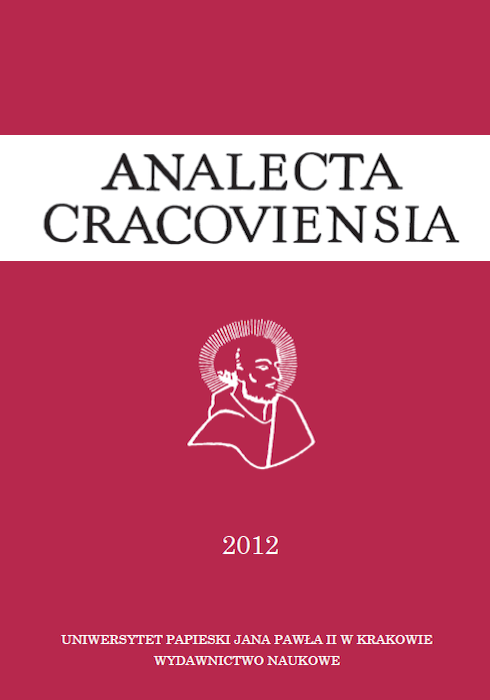Przedstawienia Ducha Świętego na ikonach bizantyjskich i ruskich. Kanon ikonograficzny a dogmat teologiczny
DOI:
https://doi.org/10.15633/acr.4Słowa kluczowe:
Christianity, dogma, Holy Spirit, icon, PentecostAbstrakt
The article describes how Christian art depicted in the Third Person of the Trinity. It was quide difficult, because the Holy Spirit could not appear as a man. Nevertheless, it can be concluded that the hidden remains an icon of the Holy Spirit, Mary, as a person completely penetrated him. On the third hypostasis of Marian icons also appeared as a dove further (the icon Annunciation), or as a light-gold.
Christ’s presence on the perceptions of the Holy Spirit has been emphasized by showing the radius, or a small circle (the icon of Christ’s birth). He revealed himself as a dove hovering (the icon of the Baptism of Christ), or as light (the icon of the Transfiguration).
However the icon showing a scene “Pentecost”, he reveals himself tongues of fire descending figure, which rest upon the Apostles.
Pobrania
Opublikowane
Numer
Dział
Licencja
Prawa autorskie (c) 2012 Olga Cyrek

Praca jest udostępniana na licencji Creative Commons Attribution-NonCommercial-NoDerivatives 3.0 Unported License.
Autorzy publikujący w czasopiśmie udzielają jego wydawcy zgody o następującej treści:
- Autor zachowuje autorskie prawa majątkowe do utworu, a jednocześnie udziela wydawcy czasopisma zgody na jego pierwszą publikację w wersji drukowanej i wersji online na licencji Creative Commons Uznanie autorstwa 4.0 Międzynarodowe oraz zgody na wykonywanie opracowań, w tym przekładów.
- Autor ma możliwość udzielania zgody niewyłącznej na opublikowanie utworu w wersji, która ukazała się w czasopiśmie (np. zamieszczenia go w repozytorium instytucjonalnym lub opublikowania w książce), wraz z informacją o jego pierwszej publikacji w czasopiśmie.
- Autor może umieścić swój utwór online (np. w repozytorium instytucjonalnym lub na swojej stronie internetowej) jeszcze przed zgłoszeniem utworu do czasopisma.

